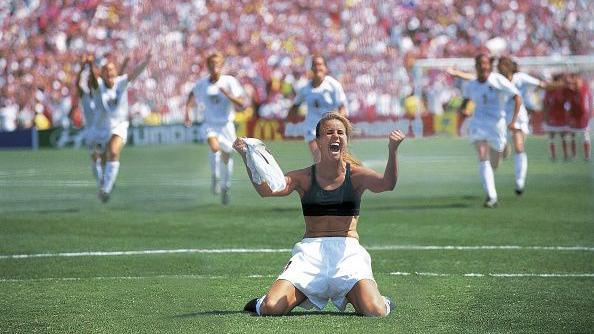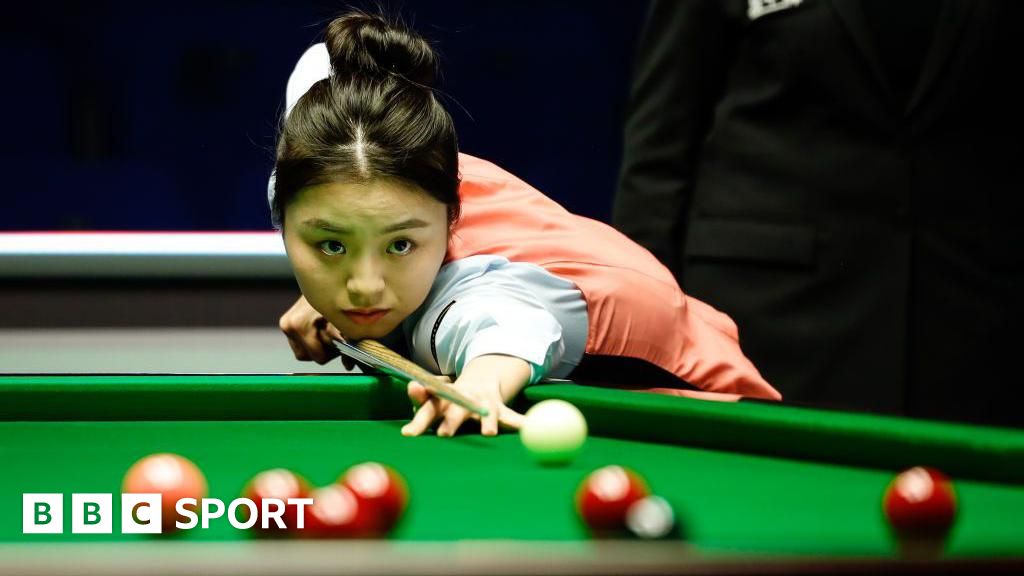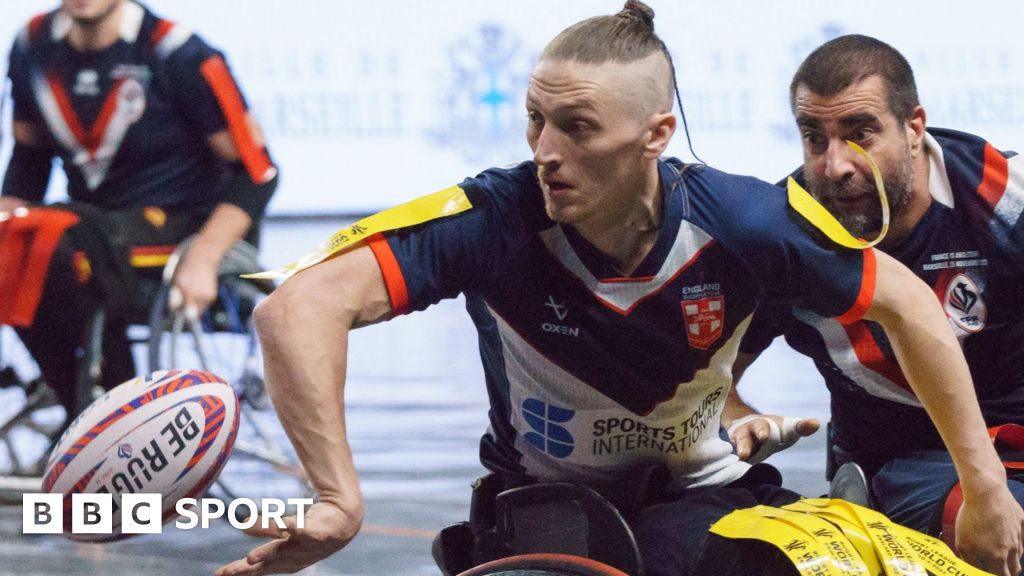ARTICLE AD BOX
 Image source, Robert Beck/Sports Illustrated
Image source, Robert Beck/Sports Illustrated
Robert Beck's iconic photo of Brandi Chastain celebrating after scoring her winning penalty in the Women's World Cup final
Sophia Hartley
BBC World Service
Two people, standing either side of a goal net, on the brink of one of the most iconic photos in sport that would change the trajectory of their lives.
Twenty-five years ago, in front of a packed crowd of 90,185 at California's Rose Bowl Stadium, Brandi Chastain stepped up to score the winning spot-kick in a penalty shootout as the United States beat China to win the Women’s World Cup on home soil.
The final would prove to be a ground-breaking moment for the women's game, with the momentum propelled by a photographer capturing an image which transcended sport.
BBC World Service's World Football has been uncovering the story behind that photo, of the winning penalty taker Chastain, and what impact it had on women’s football.
The final
Image source, Robert Beck
Image caption,The 1999 World Cup was not originally going to take place at stadiums such as the Rose Bowl (pictured on the day of the final) but the US team's success at the 1996 Olympics made organisers rethink plans to hold it at smaller venues
Robert Beck's original assignment when he arrived at a sunny Rose Bowl on 10 July 1999 for the Women's World Cup final was to capture the crowd and take pictures of high-profile names like former US President Bill Clinton.
Beck could count on one hand how many football games he had attended before arriving at the stadium. "I got there and saw how many people were there, I was kind of surprised. I mean, it still didn't hit me how important an event it was."
The USA team had won a global tournament in 1991, which was retrospectively rebranded as the Women's World Cup, but had received little recognition for the title.
In 1995 they lost in the semi-finals of the World Cup to eventual champions Norway, but anticipation of the tournament taking place on home soil had built over the decade and, in 1999, the US team delivered and fought their way to the final.
Unusually for a World Cup, the third-place play-off between Brazil and Norway was played directly before the showpiece event. That game went to penalties and, along with a performance from Jennifer Lopez, meant the USA and China had to warm-up in the cramped corridors of the stadium.
US defender Chastain vividly remembers the conditions - "the water dripping from the ceiling, the mildew - you can smell it". She adds: "It's dark, it's dank… it's perfect. And this just became another one of those opportunities for us to embrace and say, 'let's go'."
Image source, Getty Images
Image caption,The USA's number nine, Mia Hamm, was the face of the team during the tournament, appearing in TV adverts and on billboards
Once the players got to the pitch, they played out a goalless 90 minutes. After a further testing 30 minutes of extra time, Beck, camera in hand, made his way pitchside with his assistant to prepare for the penalty kicks despite neither having official access.
"We didn’t have credentials to get on the field. But I said 'no-one is going to pay attention'. This was pre-9/11, security was much more lax than it is now." So they went over to a tunnel and, with nobody looking, just walked on to the pitch.
They lined up behind the goal until they were eventually spotted by a security guard who said they needed to move.
"We were gathering our stuff, we go to leave and the security guy says 'stop, don't move, they're about to start. It’s too late… you can't distract them, so stay still where you are.'
"I don’t know what to call it - divine intervention, right place at the right time."
The sides scored their first two penalties but goalkeeper Briana Scurry then saved Liu Ying's spot-kick to give the Americans the advantage.
Image source, Robert Beck/Sports Illustrated
Image caption,Briana Scurry, who was part of the US' gold-medal winning team at the 1996 Olympics, saving Liu Ying's penalty
The next three penalties were scored, so it all came down to the hosts' final kick.
It would be 30-year-old Chastain, previously dropped for the 1995 World Cup, to take the decisive penalty. The left-back, originally the sixth penalty taker, remembers the nerves setting in after being bumped to fifth by head coach Tony DiCicco and instructed to take the final kick of the game with her left foot.
Chastain is right footed.
"I'd never taken a penalty with my left foot in a game before, and certainly not in a World Cup final, and certainly not in front of 90,000 people," she said.
She stepped up to the line and placed the ball on the penalty spot.
"I took a deep breath and waited for the whistle, and as Tony told me, I took it with my left foot."
Chastain, who went on to win 192 caps for her country, struck the ball emphatically past China goalkeeper Gao Hong. The stadium erupted, and the USA became World Cup winners.
On the other side of the net, photographer Beck was in position. "Brandi makes the kick and I'm in a cocoon," he says. "It just goes crazy - you could probably hear it in the UK - the sound of 90,000 people cheering and going crazy."
Chastain ripped off her shirt, her sports bra on show, and dropped to her knees screaming as her team-mates ran towards her.
Image source, Robert Beck
Image caption,Television viewers peaked at an estimated 40 million for the final in America
Behind the goal, Beck captured the image. Right place, right time.
"You never know how you’ll react emotionally to a moment like that," says Chastain. "That moment was insanity."
'Indelible moment in American sports history'
Beck’s photo of Chastain’s celebration was chosen for the front cover of Sports Illustrated, one of the biggest sport magazines in the world, and would go on to become one of the most iconic covers of all time.
A few days after the game, Beck picked up his issue and saw it for the first time. "It was a better cover than I imagined. It was just Brandi and it was just one word - the word 'yes'."
Image source, Henry Ray Abrams/AFP
Image caption,Brandi Chastain making one of her many media appearances in the months that followed her match-winning moment
Kelly Whiteside, Montclair State University professor and sport journalist, followed the USA team throughout her career and remembers the impact the image had on the media landscape.
"If you walked into a grocery store that week and you were at the checkout line, all you would see is a cover of Brandi Chastain celebrating that game. That week was really historic from a media perspective.
"The way she celebrated and the fact that image has become, in our country, one of the most iconic sports images of all time… is just an indelible moment in American sports history."
She says the impact was "two-fold" – it not only legitimised women’s sport, it also inspired the next generation.
"All the players that came after the '99 team point to that moment in time," she says. "They inspired them to become soccer players."
The image was considered a sign of resilience and strength for women in sport. For goalkeeper Scurry, the introduction of the first women's football league was a direct impact of the so-called 99ers' success.
"That first 18 league was basically the brainchild and the inspiration of the 1999 World Cup, and so that was the first start of an iteration of a league that was professional for women's soccer."
Progress has not been a straight line and the league collapsed within two years, but the impact was still far-reaching and, according to Scurry, "set the groundwork" for what has happened since.
The reunion
Some five years after the final Beck arrived at a basketball game where Chastain was working as a TV reporter. The two had never met so Beck decided to introduce himself.
"Brandi just jumps on me and she wraps her arms around me and she's crying.
"She says 'Robert, you don’t understand what that cover meant to hundreds of thousands of women and little girls in our country and around the world'. I had never thought of it like that.
"She said 'girls now know that they can be athletes. Girls now know that they can be on the cover of Sports Illustrated'. It completely changed the way I looked at that cover."
The impact was not restricted to just the US.
Englishwoman Emma Hayes, now the head coach of the current US national team, said: "They were my role models as an English girl."
Hayes and her team head to England next week for a friendly at Wembley Stadium. It is a venue which witnessed Chloe Kelly evoke memories of Chastain by memorably twirling her shirt above her head after scoring the match-winning goal for England in the Euro 2022 final.
Image source, Getty Images
Image caption,Brandi Chastain tweeted Chloe Kelly after her celebration during the Euro 2022 final, saying "I see you"
Chastain had her moment, then so did Kelly – and now former Chelsea coach Hayes says her current US team have "an amazing opportunity" to create their own legacy.
"I have this really cool picture I use with the team which is the [99ers] team on the podium with that ridiculous crowd [behind them] and across it I put a quote 'people don't remember time, they remember moments'. That's what I remember."

 3 hours ago
1
3 hours ago
1








 English (US)
English (US)